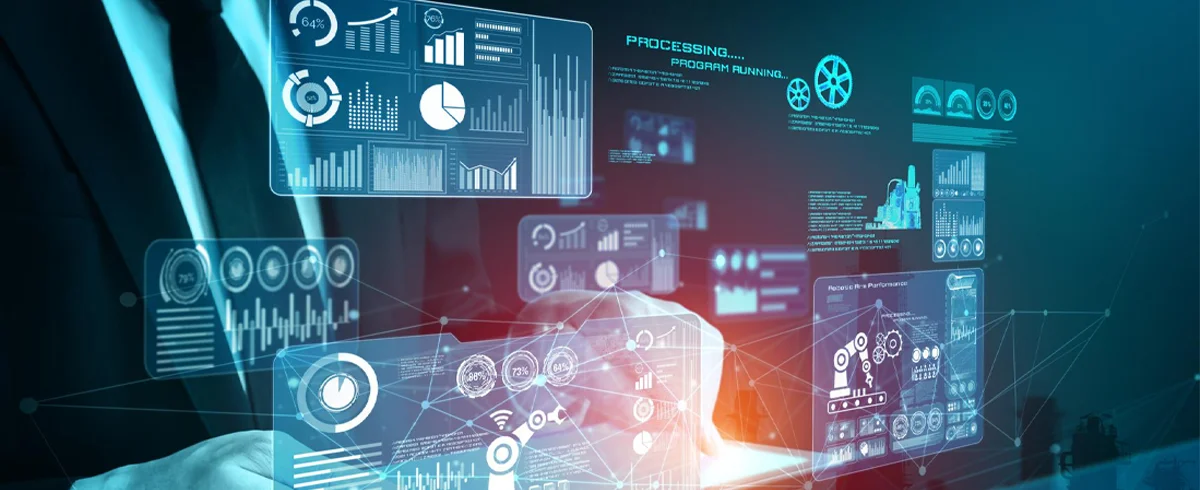Necessary Always Active
Necessary cookies are required to enable the basic features of this site, such as providing secure log-in or adjusting your consent preferences. These cookies do not store any personally identifiable data.
|
||||||
|
||||||
|
||||||
|

Financial forecasting is a vital tool for guiding business decisions by anticipating market changes and financial performance. It bridges the gap between past trends, current strategies, and future opportunities.
While the principles and intentions of financial forecasting have remained the same, the methods used in the past differ from what we see in the present, and will likely change in the future. Digitization, big data, and e-commerce trends have all been part of this evolution. The biggest game changers yet are Artificial Intelligence (AI) and machine learning and we expect that they’ll be a disruptive force in the foreseeable future.
This article takes a journey through the past, present, and future of financial forecasting. We’ll explore how it has changed over time, what’s shaping it now, and what trends we can expect to see in the years ahead.
Financial forecasting involves predicting the financial future of a business by analyzing past data, market trends, and economic factors. This process helps companies make well-informed decisions by:
Although forecasts typically rely on past trends, they can also incorporate real-time data to give a more accurate picture.

Financial forecasting helps businesses to plan and make decisions. Here’s why it’s important:
In a nutshell, with financial forecasting, businesses stay on track, make strategic choices, and be prepared for the unforeseen.
Factors such as data quality, market unpredictability, and technological gaps can affect the accuracy of financial forecasts.
Here’s how businesses can address these challenges:
Accurate forecasts rely on high-quality data. However incomplete or outdated data can lead to unreliable forecasts. Your business can address this by investing in proper data management tools to ensure accurate, up-to-date information.
Shifts in the economy such as recessions or policy changes, can impact forecasts. Using scenario planning, you can prepare for multiple possible outcomes. Scenario planning involves creating “best case”, “worst case” or “most likely” scenarios, and then developing strategies to deal with any of these range of situations.
Traditional forecasting methods lack the speed and flexibility needed to operate in today’s fast-paced data environment. With advanced technologies like AI and data analytics tools, businesses can improve forecast accuracy and adaptability.
Now that we’ve covered what financial forecasting is, why it’s important, and how to tackle common challenges, let’s dive into how it’s evolved over time and where it’s headed next.
Before the age of computers, financial forecasting was conducted manually. Humans were the machines we relied on to predict the future.
Analysts and financial professionals relied heavily on data stored in financial books, ledgers, statements, and market reports. They used tools like graph paper, mechanical calculators, and slide rules.
They often spent endless hours performing complex calculations by hand and combing through piles of data to derive insights. These analysts were highly educated, had years of experience, a sharp eye for spotting trends, and a spot-on intuition honed from poring endlessly through numbers.
Assuming you were a financial analyst in the analog days, here’s a simple framework you’d use to perform your forecasting:
First, you’d to start with an assumption that trends tend to repeat themselves. So, if a company’s sales grew by 5% annually for the last five years, a similar growth rate for the next year seemed reasonable.
You would then analyze data on revenue, expenses, market conditions, and other relevant factors, and plot them on graphs to visualize future trends and patterns.
Numbers told only part of the story. Now here’s where expertise and intuition would come in:
As numbers don’t always perfectly align with assumptions, intuition, and experience would often be called in to assist. If the data didn’t align with their expectations, analysts would use their professional judgment to adjust forecasts. They would refine their predictions based on factors such as shifts in consumer behavior, emerging trends, policy changes, and economic indicators such as interest rates and inflation.
While manual financial forecasting worked well in stable environments, it struggled when the unexpected happened -like the Great Depression of the 1930s.
Relying solely on historical trends, and lacking the ability to anticipate or rapidly adapt to sudden market shifts, sometimes traditional methods gave inaccurate predictions as they couldn’t anticipate the stock market crash of 1929, nor could they account for the systemic failures as the economy continued to deteriorate in the 1930s.
The oil crisis of the 1970s is another example of the limitations of manual financial forecasting. Although world economies are heavily reliant on oil imports from OPEC nations, analysts didn’t factor into their calculations, how the geopolitics of those OPEC nations would affect energy supply. As such, when OPEC member nations declared an oil embargo, other countries didn’t see it coming.
Fast forward to today, and the world of financial forecasting looks very different. Companies and investors have access to more data than ever before. More so, new tools have emerged to make sense of this data in ways that were unimaginable just a decade ago, unlocking a whole range of big data and analytics benefits.

Today, financial forecasts are no longer based solely on historical data. Companies now have real-time access to customer behavior data, geo-political news, stock market fluctuations, and social media trends. They can even factor information such as weather patterns in forecasts.
Analysts analyze and process this data on the fly, providing a more accurate and timely view of future trends.
AI can process massive amounts of data quickly and detect patterns that humans might miss. AI systems can analyze everything from financial statements to global economic indicators in seconds and make precise predictions.
Machine learning algorithms are trained on historical data, to identify patterns and trends. Over time, they improve as new data becomes available. This ability to “learn” from data has made AI powerful in predicting stock prices and market trends.
Today’s forecasters don’t just rely on one prediction—they prepare for multiple outcomes. They create different scenarios such as a recession, a boom, or market disruption, and model how each situation would affect the financial future of a company.
Scenario planning aided by digital twins technology can help companies make more informed decisions, especially in uncertain or volatile markets.
As we look to the future, it’s clear that financial forecasting will continue to evolve. AI, automation, and blockchain will continue to influence how we predict financial trends.

Let’s explore some trends that are likely to shape the future of forecasting.
We’re already seeing the rise of predictive analytics. In the future, we are likely to see reduced reliance on human analysts as businesses adopt fully automated systems.
As machine learning algorithms continue to evolve, predictive models will be able to anticipate market changes faster and more accurately. So, AI and machine learning will be able to instantly adapt to new data from CRM and IoT devices, to automatically adjust forecasts as conditions change.
Another trend that could reshape financial forecasting is the growing use of blockchain technology. With blockchain, financial transactions will become more transparent, making it easier to track cash flow, verify financial statements, and ensure forecasts with trustworthy data. This could reduce fraud and improve the accuracy of financial forecasting across industries.
While AI and automation are becoming more central to financial forecasting, there will always be a role for human analysts. The future of forecasting is likely to be a blend of AI-driven automation and human oversight.
Machines will handle the heavy lifting—analyzing data, running models, and making predictions—but we’ll still need human experts to interpret the results, adjust for context, and make judgment calls in ambiguous situations.
The future forecaster will need to be tech-savvy. They’ll need to understand how to work with AI tools and automation, while still applying their expertise to guide decision-making.
Financial forecasting has come a long way from the days of ledgers and slide rulers. Today, financial forecasting is more accurate, thanks to big data, AI, and real-time analytics.
The trends shaping financial forecasting will likely accelerate, with automation, predictive analytics, and blockchain playing key roles.
That said, no matter how far we’ve advanced technologically, the need for a balance between technology and human judgment will remain.
Sign up to receive our newsletter featuring the latest tech trends, in-depth articles, and exclusive insights. Stay ahead of the curve!